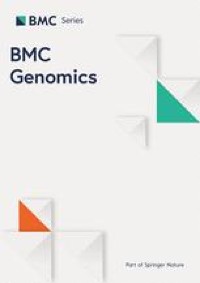The USDA ARS published a study examining a population of 181 strains of STEC over 23 years from a closed-system feedlot. (Weinroth, M.D., Clawson, M.L., Arthur, T.M. et al. Rates of evolutionary change of resident Escherichia coli O157:H7 differ within the same ecological niche. BMC Genomics 23, 275 (2022)). All strains were subjected to short-read sequencing, with a subset of 36 also subjected to long-read sequencing. The goal of the study was to understand how STEC O157:H7 evolve over time and offer context into strain relatedness in foodborne illness outbreak investigations. Over 23 years, four main clades of STEC O157:H7 were present within the feedlot, each recovered over a time span of at least a decade. @ https://bmcgenomics.biomedcentral.com/articles/10.1186/s12864-022-08497-6#Sec11
Evolutionary change of Escherichia coli O157:H7 over time in a feedlot
Background Shiga toxin-producing Escherichia coli (STEC) O157:H7 is a pathogen known to reside in cattle feedlots. This retrospective study examined 181 STEC O157:H7 strains collected over 23 years from a closed-system feedlot. All strains were subjected to short-read sequencing, with a subset of 36 also subjected to long-read sequencing. Results Over 96% of the strains fell into four phylogenetically distinct clades. Clade membership was associated with multiple factors including stx composition and the alleles of a well-characterized polymorphism (tir 255 T > A). Small plasmids (2.7 to 40 kb) were found to be primarily clade specific. Within each clade, chromosomal rearrangements were observed along with a core phageome and clade specific phages. Across both core and mobile elements of the genome, multiple SNP alleles were in complete linkage disequilibrium across all strains within specific clades. Clade evolutionary rates varied between 0.9 and 2.8 SNP/genome/year with two tir A allele clades having the lowest evolutionary rates. Investigation into possible causes of the differing rates was not conclusive but revealed a synonymous based mutation in the DNA polymerase III of the fastest evolving clade. Phylogenetic trees generated through our bioinformatic pipeline versus the NCBI’s pathogen detection project were similar, with the two tir A allele clades matching individual NCBI SNP clusters, and the two tir T allele clades assigned to multiple closely-related SNP clusters. Conclusions In one ecological niche, a diverse STEC O157:H7 population exhibited different rates of evolution that associated with SNP alleles in linkage disequilibrium in the core genome and mobile elements, including tir 255 T > A.

